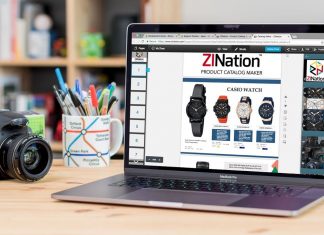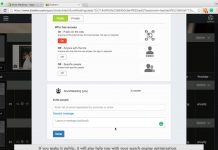L-SPARK’s Founder Focus blog series highlights how company founders in our Incubator and
Accelerator programs deal with common issues and questions in relation to Entrepreneurship
and startups.
David Ker, president, and CEO of ZINation, discusses the process his company went through to
validate its e-commerce merchandising software platform.

As a software engineer and entrepreneur, I’ve learned that building a solution without consulting
customers and understanding their needs is a mistake. In fact, L-SPARK mentors
encourage us to fully understand the pain points we’re solving to make sure we’re building
something that truly is useful in the market: in other words, validating our product. Software
engineers often think that, if they build a product, people will start using it. As it turns out,
people are not interested in a perfectly-designed software program unless it solves a problem
they face with their business.
In my experience, there are several steps to validating a software product, each one with
an important focus on interacting with customers.
1.Talk with potential customers to identify their needs.
Before we consolidated ZINation as an e-commerce merchandising platform, we were not
entirely clear as to the problems that needed to be addressed and solved in that field—our
original objective had been to work on visualization and improve UI experience on mobile
devices. But since our team had served customers in mobile and web application
development, we turned to them to understand what solutions were needed.
By talking to those previous customers, we discovered that many online retailers were
looking for ways to customize their websites and give them a magazine look and flexibility
for merchandising purposes. So we decided to build an e-commerce platform to make it
easy for online stores to display their products and create customized online catalogues in
line with their styles.
As e-commerce was a new field to us, we would not have understood the pain
points related to it without talking to our previous customers.

2.Seek out early adopters.
Once we had identified our target audience, we understood which benefits to highlight and
how to market the product. ZINation’s co-founder approached retailers with Shopify online
storefronts and asked them about some commonly-found e-commerce issues. Having
started the conversation as to what they were looking for in a solution, we were even able
to acquire several of them as customers.

These early adopters are proof that one’s software is relevant and needed in the market.
Early adopters also greatly help one modify and improve a product, as will be mentioned in
the next point
3.Keep in touch with customers and iterate.
Once we had developed our product, we knew changes would be made to it based on
customer feedback.
We use the agile software development methodology approach, which involves
incorporating customer feedback throughout the entire process. This proved extremely
helpful and led to incorporating some key features including the ability to export a zine into
a PDF. We did not have this export option in the first iteration of the software but, once
customers had requested it, we implemented it. As we realized during this process,
customers can provide important insights one may not have gotten otherwise.

If you iterate too infrequently, you might be working on changes or adding things that
customers don’t want. So we adopted a one-month sprint policy during which we delivered
major milestones based on that time period. Leveraging customer feedback, whether
positive or negative, is key to improving one’s product.
Today, there’s more work for us to do as developing software is a continuous, dynamic
process. Being in the L-SPARK Incubator has provided us with priceless feedback from
mentors and peers, which is helping us to keep on evolving and enhancing our software.

















